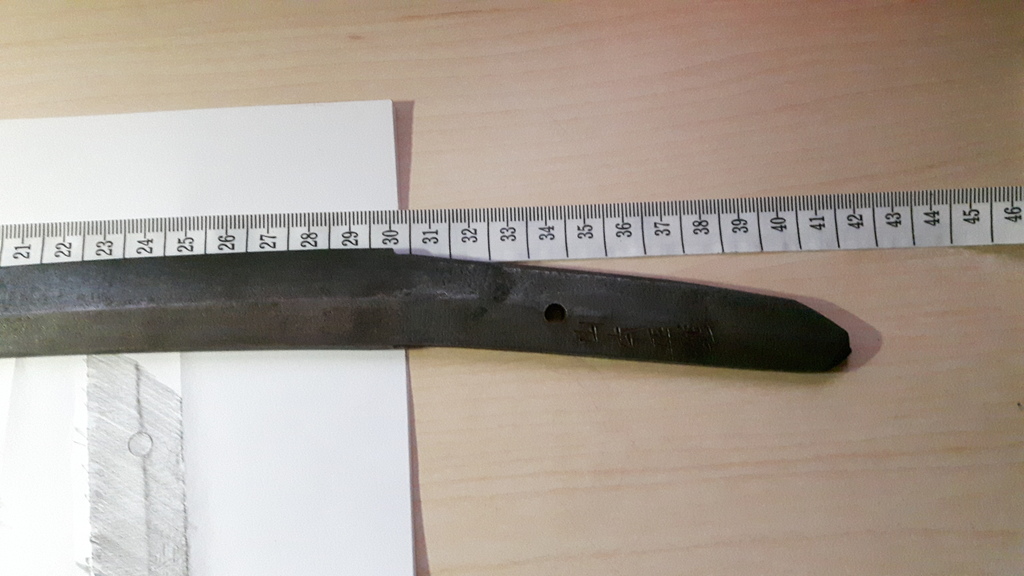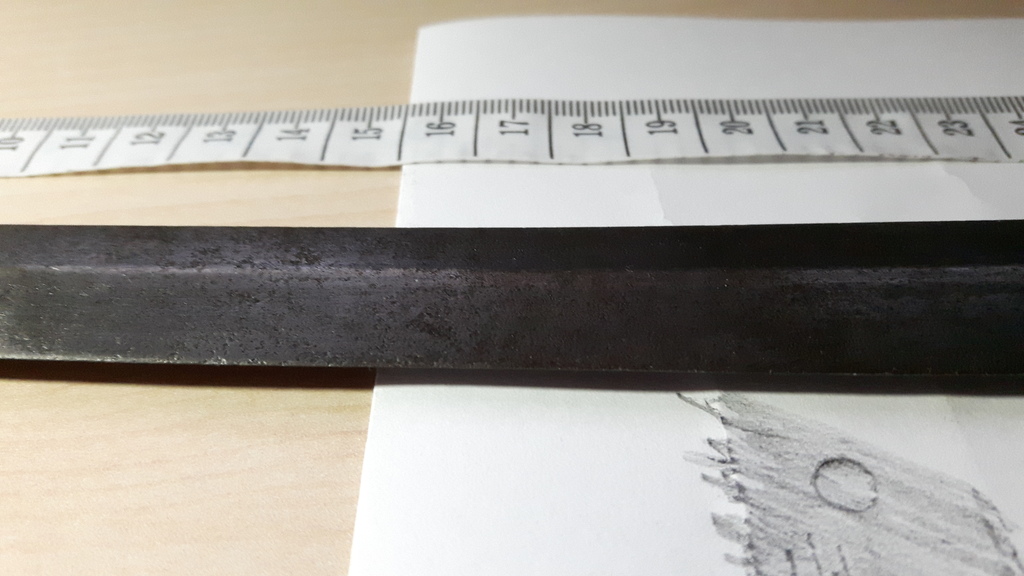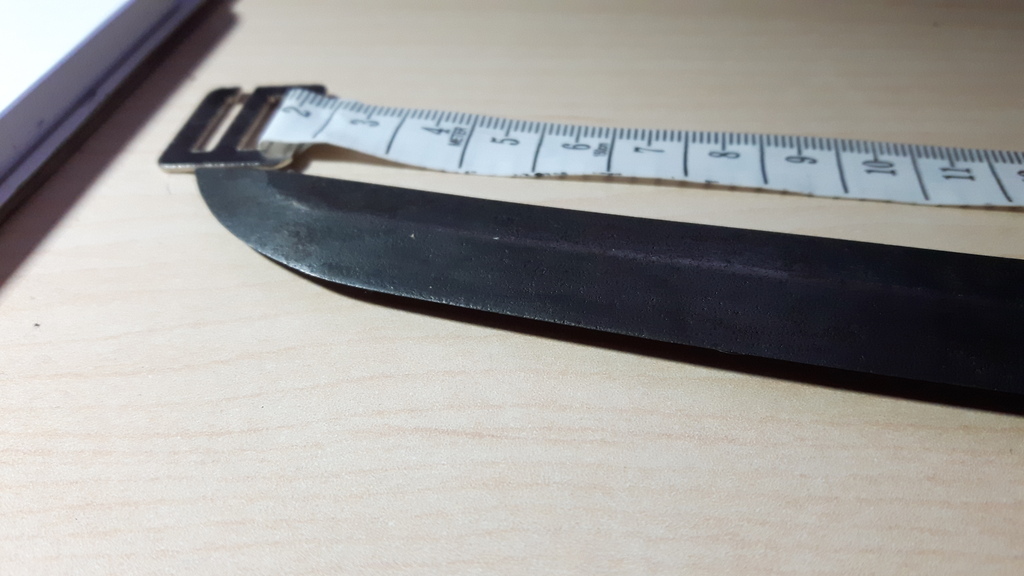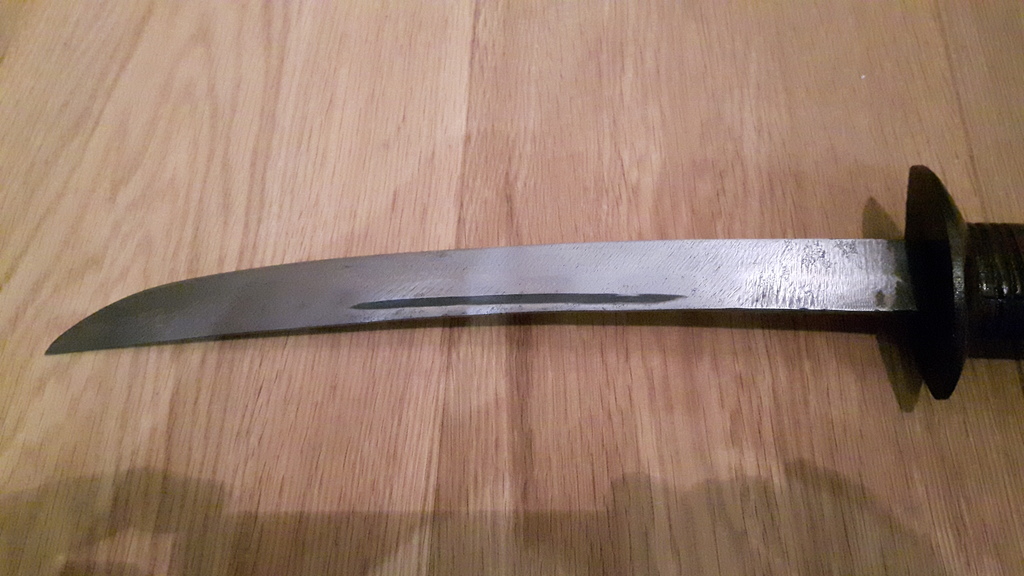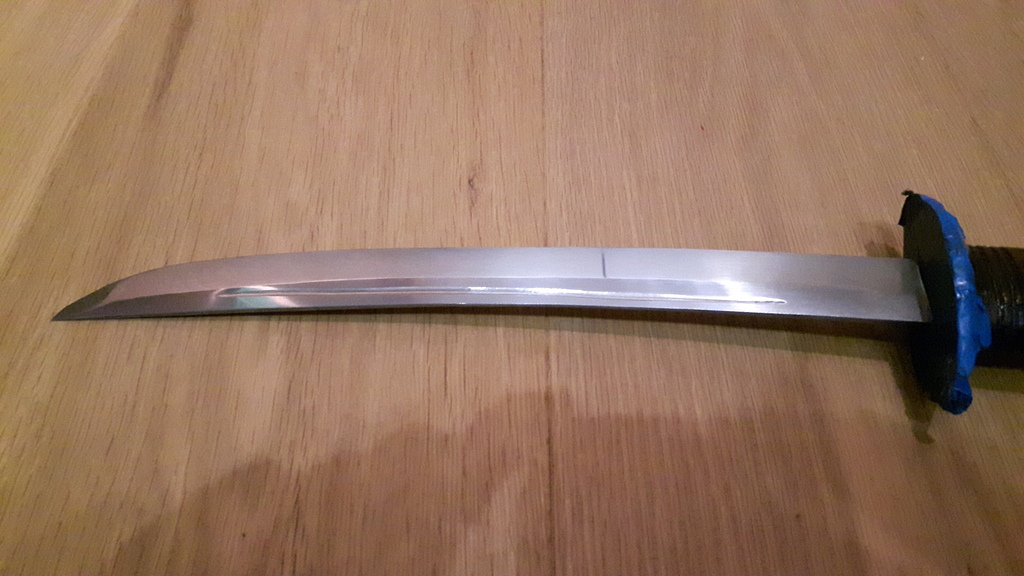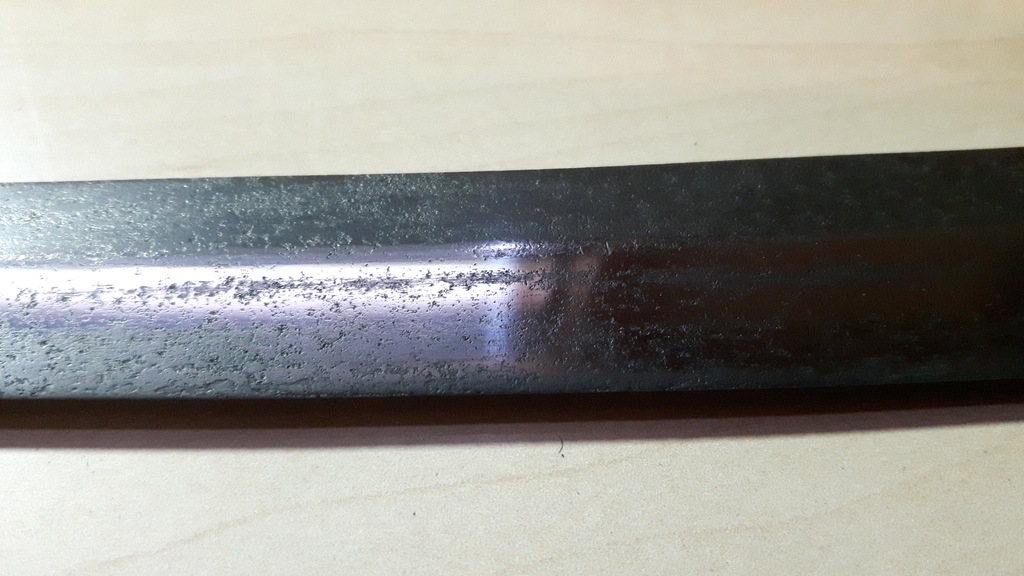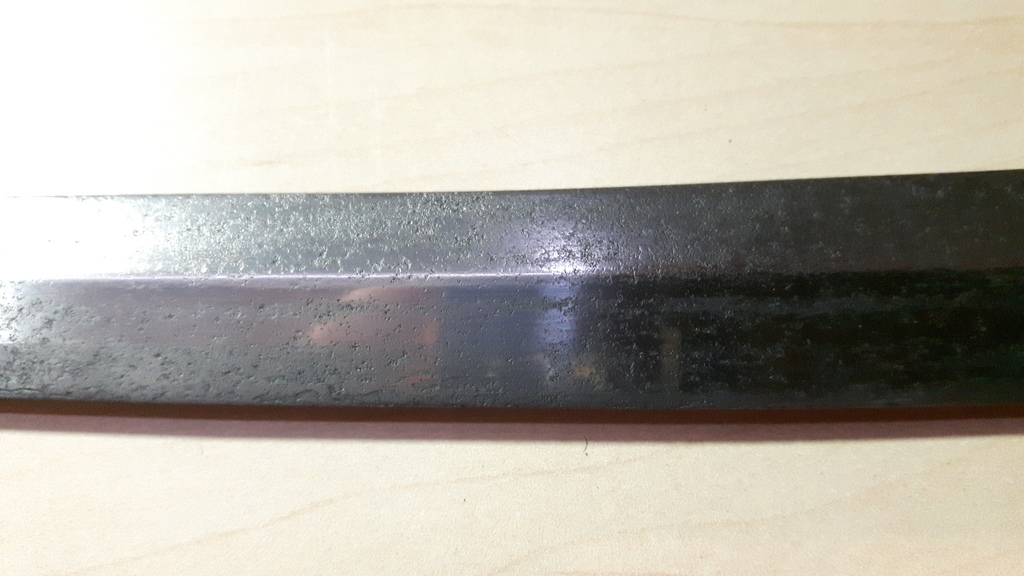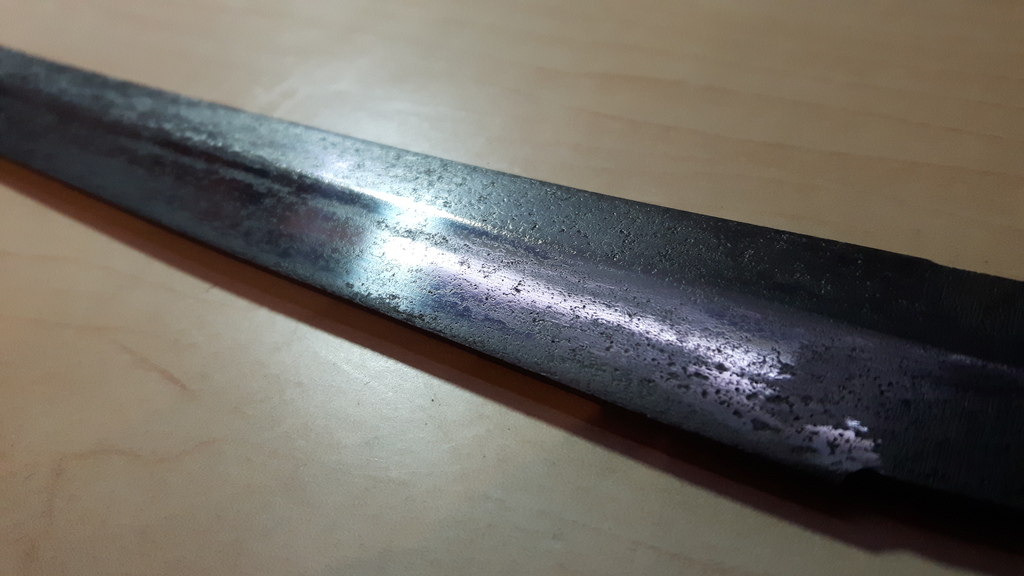I'm new to this forum (and to historical weapons as well btw), but I have always had a fascination with japanese weapons, such as the katana, wakizashi, tanto, ...
Recently I have acquired (what I believe/hope) is a historical tanto. The blade seems to be old, but I know imitations are common. I have done my fair share of research before buying older weapons (I have a few modern). So I think the one I bought I the real deal (again I hope).
Now for the hard part: I'm trying to figure out more about this weapon, particularly the age and maker?
I've read a few articles and books to try and figure out myself what is written (signature/Mei) on the tang (Nakago).
The more I read, the more complex everything is starting to get and I think I'm in over my head :)
It would probably take me a few years to decipher, so that's why I came to this forum.
I hope some of you will be able to tell me a little bit more about this tanto. Any help towards date, maker, value? would be greatly appreciated. I have included a few pictures below:
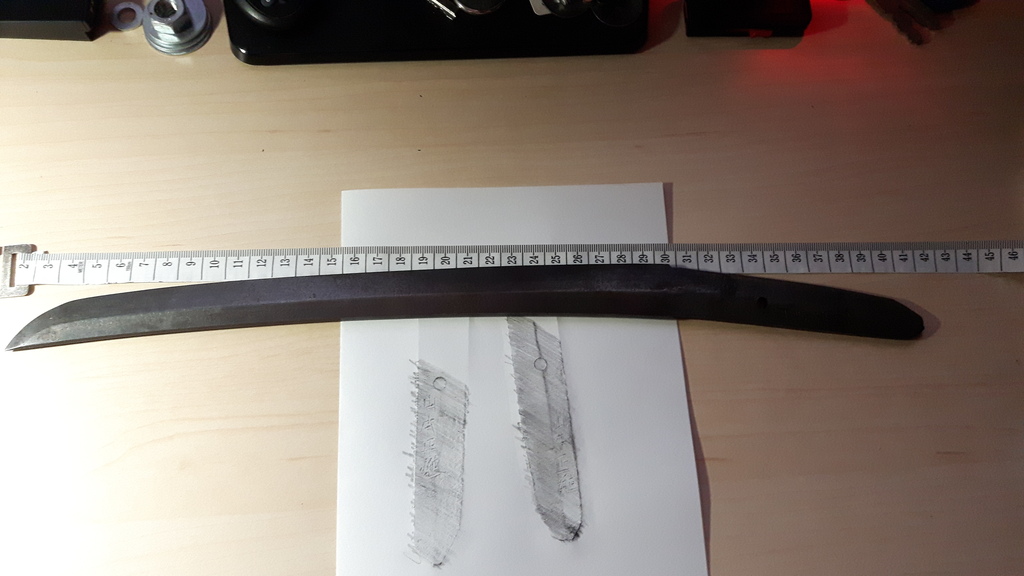


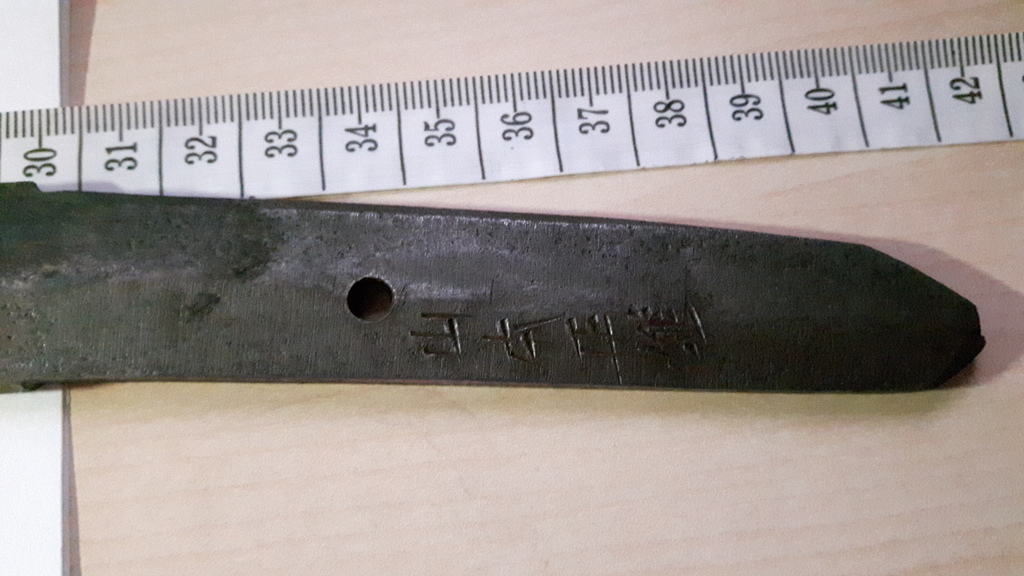

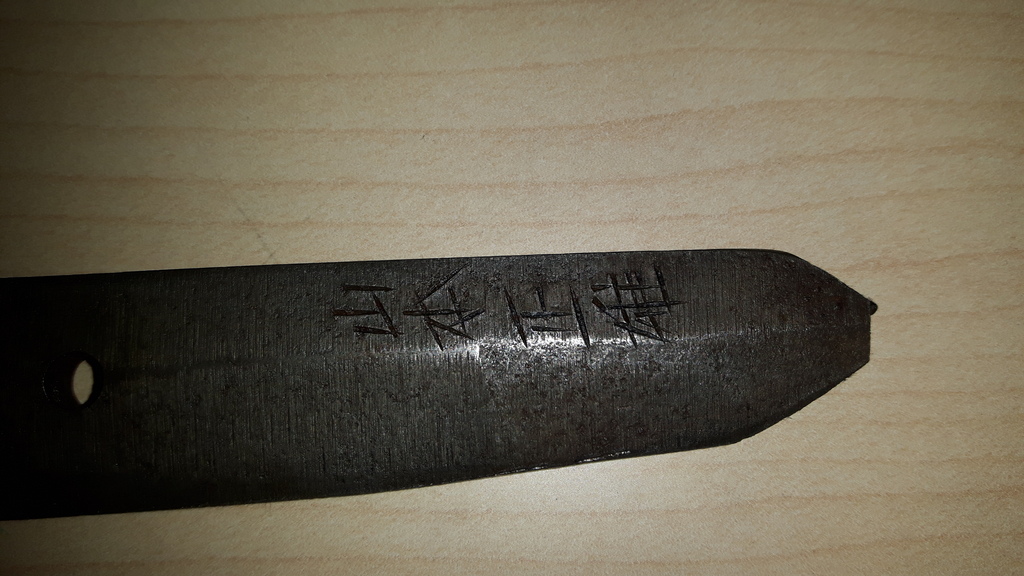
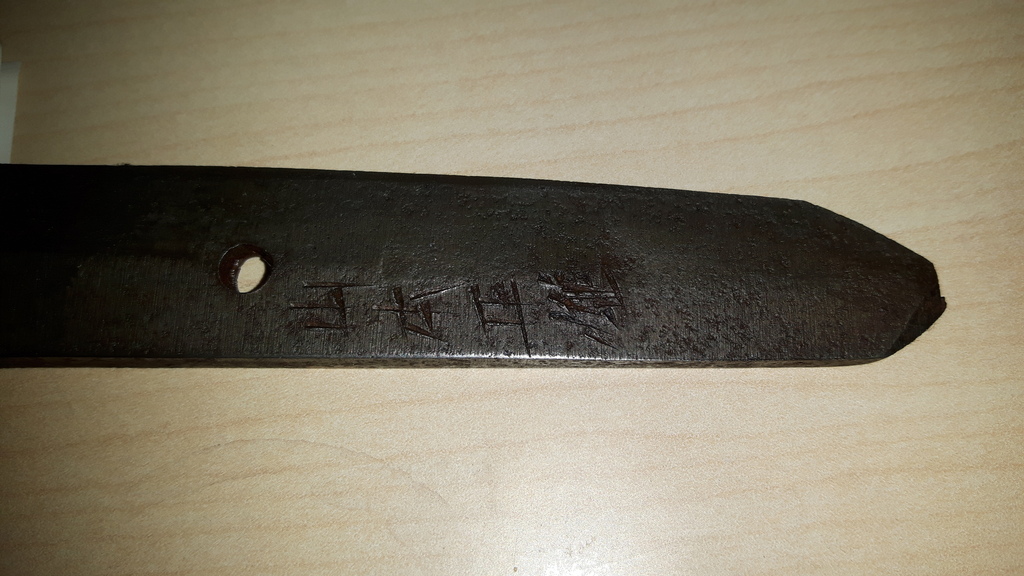
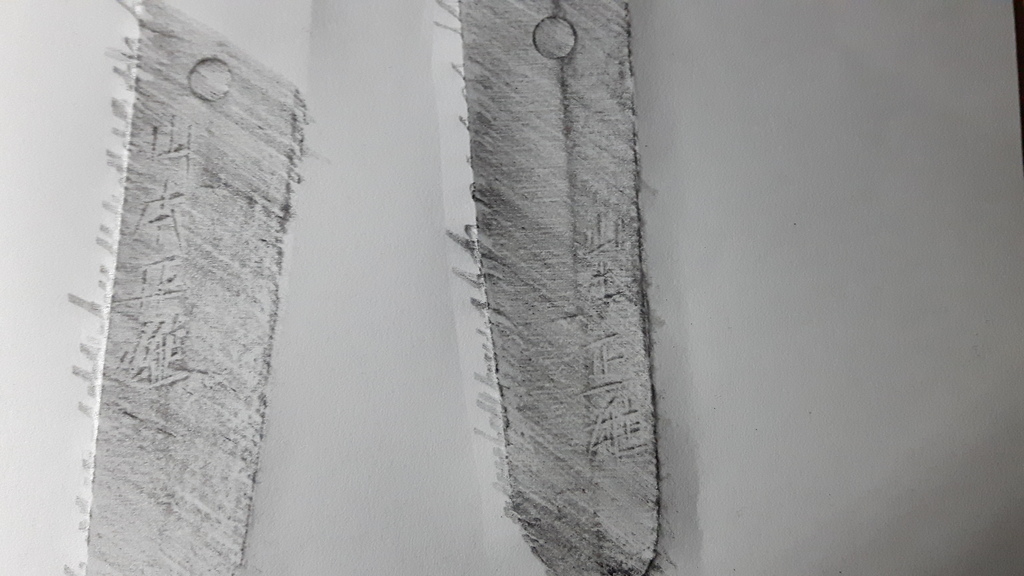
Greetings
Hannes
